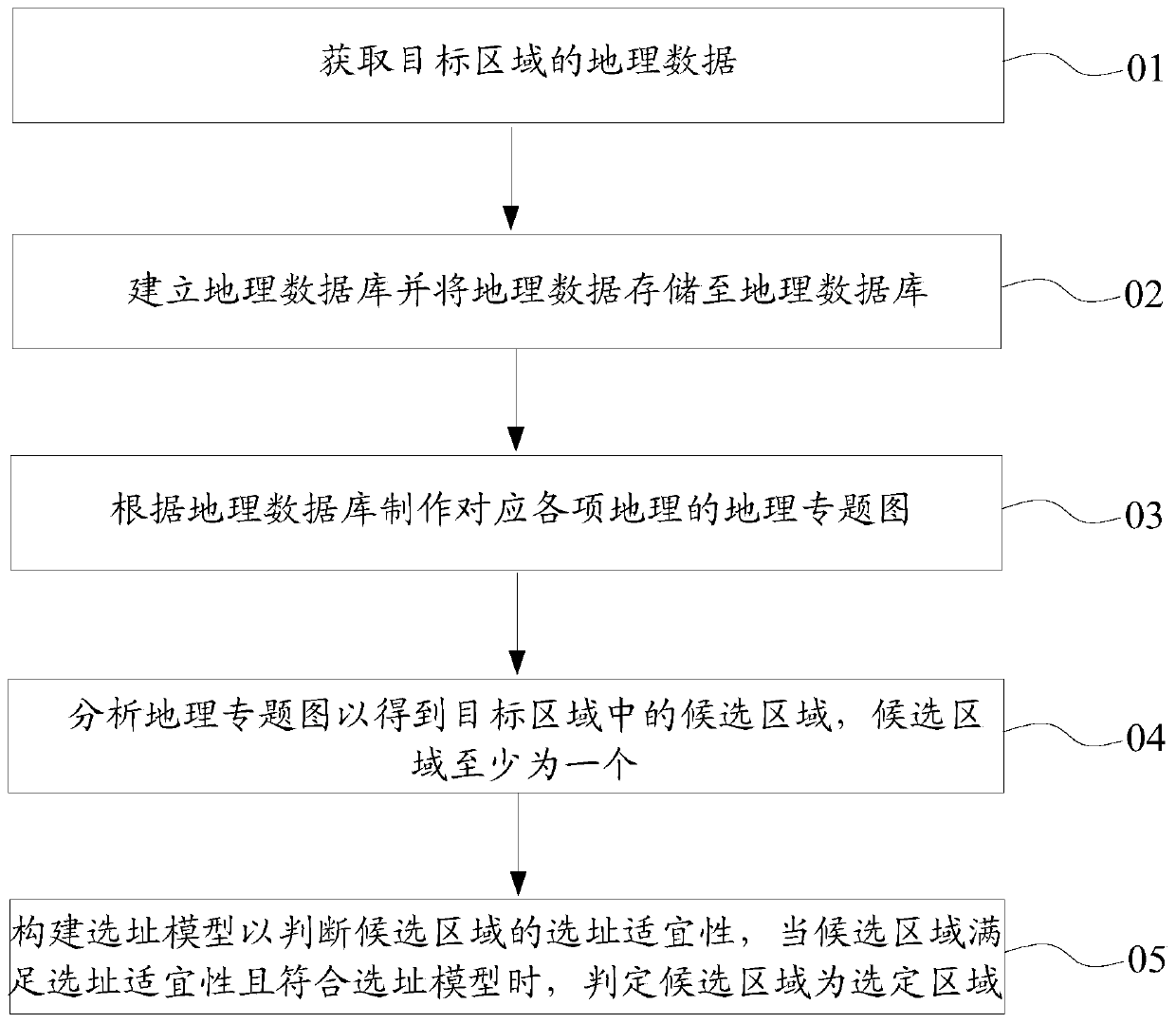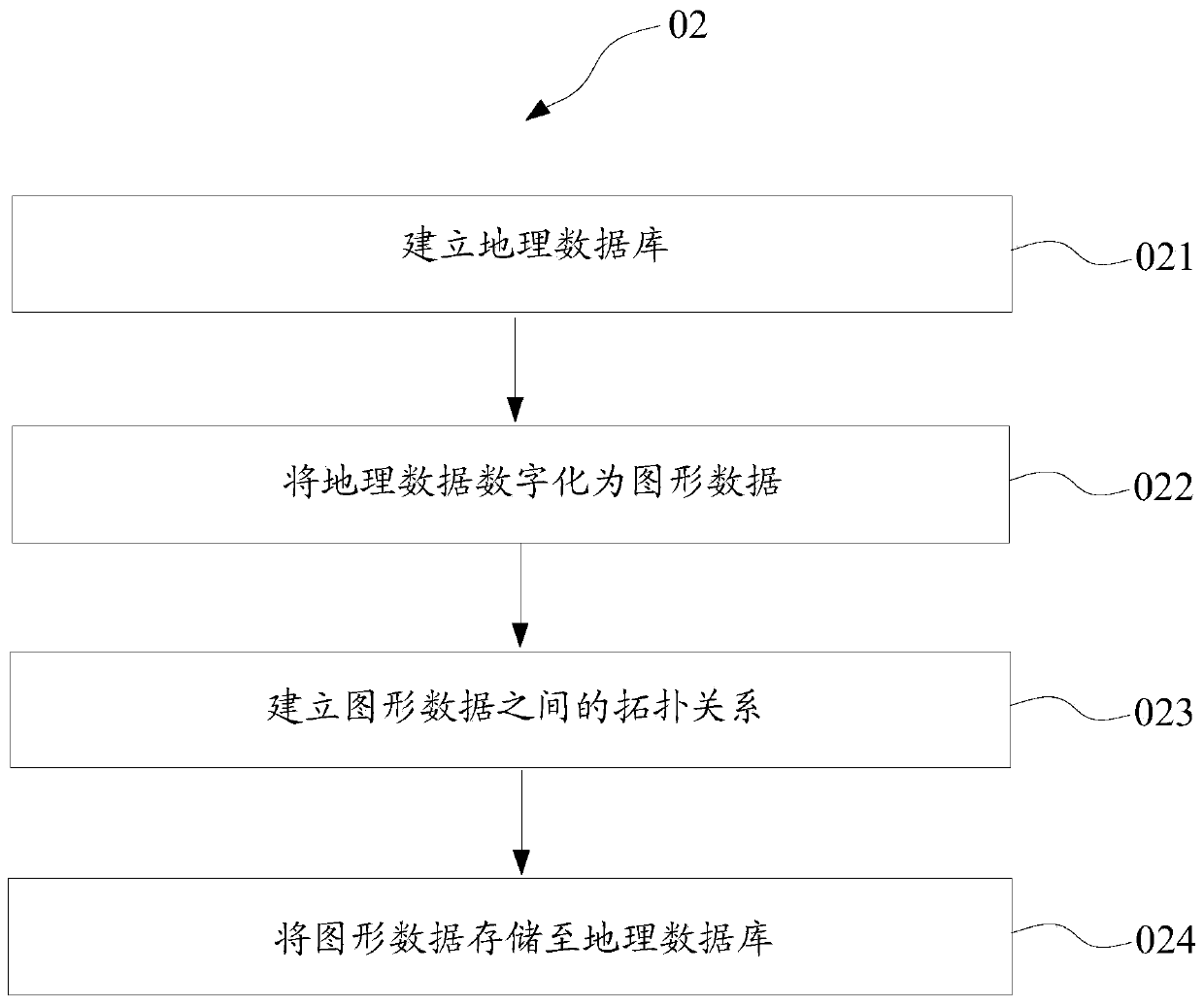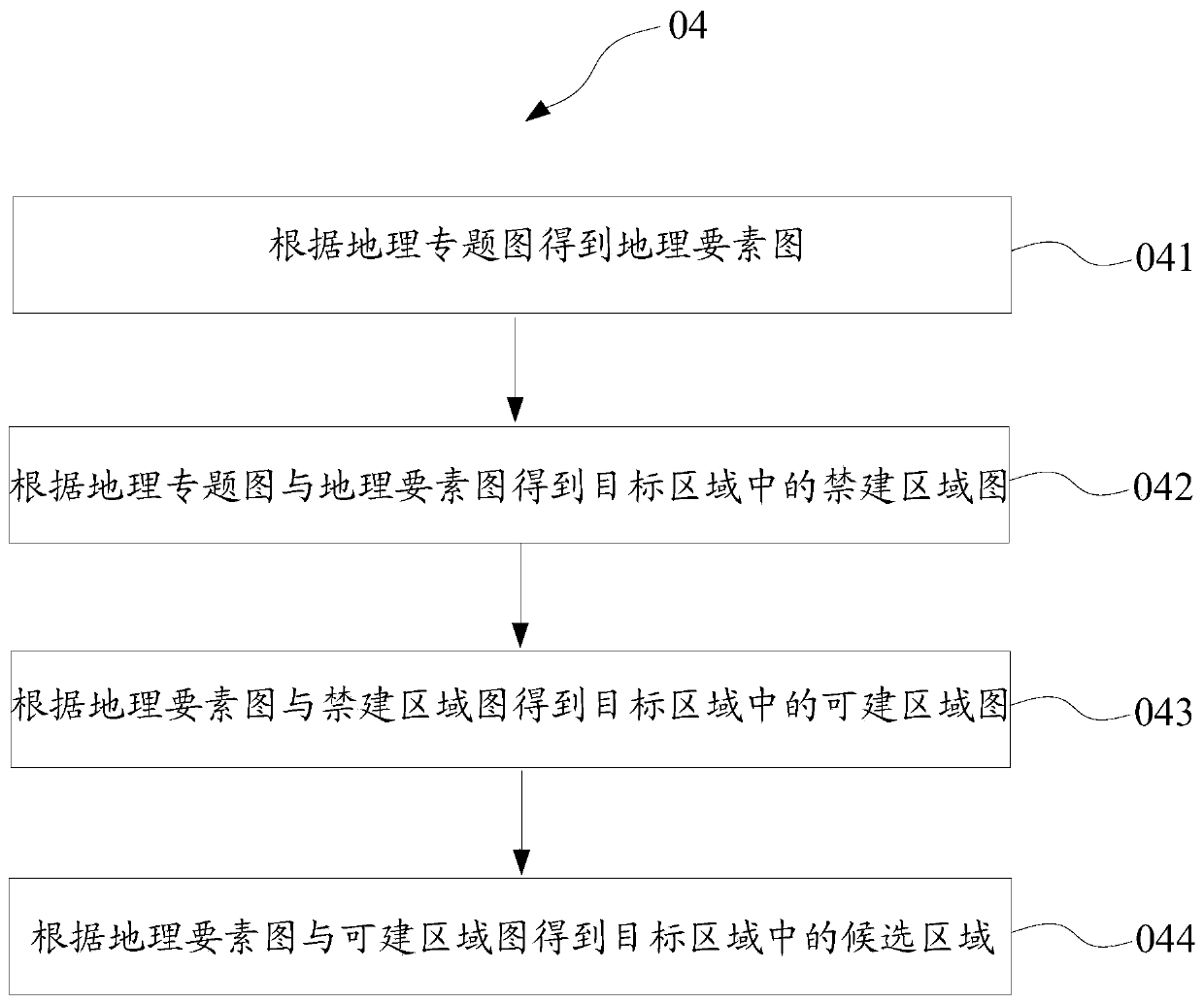GIS-based refuse landfill site selection method and GIS-based refuse landfill site selection device
A technology for landfills and candidate areas, applied in the information field, can solve the problems of high cost, long time, and large manpower and material resources, and achieve the effect of low cost, high evaluation accuracy, and short time
- Summary
- Abstract
- Description
- Claims
- Application Information
AI Technical Summary
Problems solved by technology
Method used
Image
Examples
Embodiment 1
[0025] see figure 1 , the GIS-based landfill siting method of the embodiment of the present invention, comprising steps:
[0026] S01: Obtain geographic data of the target area;
[0027] S02: Establish a geographic database and store geographic data in the geographic database;
[0028] S03: Make geographic thematic maps corresponding to various geography according to the geographic database;
[0029] S04: Analyze the geographic thematic map to obtain candidate areas in the target area, at least one candidate area;
[0030] S05: Build a site selection model to judge the suitability of the candidate area for site selection. When the candidate area meets the site selection suitability and conforms to the site selection model, it is determined that the candidate area is the selected area.
[0031] The site selection method of the embodiment of the present invention is based on the geographic information system platform, and by utilizing the spatial analysis function of the geo...
Embodiment 2
[0038] Further, see figure 2 , step S02 includes the steps of:
[0039] S021: Establish a geographic database;
[0040] S022: Digitize geographic data into graphic data;
[0041] S023: Establish a topological relationship between graphic data;
[0042] S024: Store the graphics data in the geographic database.
[0043] Specifically, in the embodiment of the present invention, a new geographic database file is created in the software ArcGIS Catalog, and the acquired geographic data is digitized into graphic data with geometric shapes and graphic symbols, and the topology between multiple geographic data is established. Relationship, so that the spatial connection and adjacency relationship between the graphic data can be displayed more vividly and intuitively, and finally the graphic data is stored in the geographic database. It is understandable that graphic data has a better display effect. When the data of the geographic database needs to be referenced, the data exported...
Embodiment 3
[0047] Further, see image 3 , step S04 includes the steps of:
[0048] S041: Obtain a geographic element map according to the geographic thematic map;
[0049] S042: According to the geographic thematic map and the geographic element map, obtain the prohibited construction area map in the target area;
[0050] S043: Obtain a buildable area map in the target area according to the geographical element map and the forbidden area map;
[0051] S044: Obtain candidate areas in the target area according to the geographic feature map and the buildable area map.
[0052] Specifically, analyzing the geographic thematic map is to conduct spatial analysis on the above-mentioned geographic thematic maps, such as the distribution map of urban water intake points and the distribution map of residential areas, use the buffer function of the geographic information system to analyze the buffer zone, and use the radiation as the radius Make a buffer zone of 800m to obtain the radiation map o...
PUM
 Login to View More
Login to View More Abstract
Description
Claims
Application Information
 Login to View More
Login to View More - R&D
- Intellectual Property
- Life Sciences
- Materials
- Tech Scout
- Unparalleled Data Quality
- Higher Quality Content
- 60% Fewer Hallucinations
Browse by: Latest US Patents, China's latest patents, Technical Efficacy Thesaurus, Application Domain, Technology Topic, Popular Technical Reports.
© 2025 PatSnap. All rights reserved.Legal|Privacy policy|Modern Slavery Act Transparency Statement|Sitemap|About US| Contact US: help@patsnap.com



